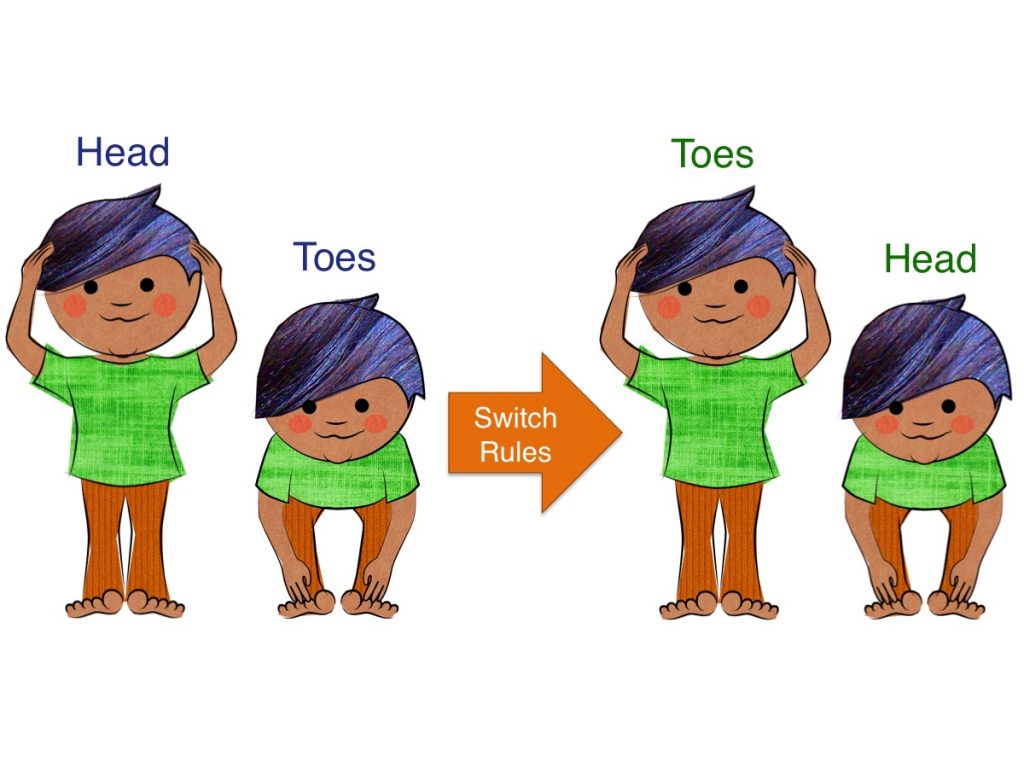
We use executive skills all the time in our everyday lives. In the classroom, children use them when they have to pay attention in class, or when they switch from one activity to the next. Music is not the only way to give these skills a boost. Games like Head, Shoulders, Knees, and Toes help exercise our executive functioning skills. And they are fun too! In Head, Shoulders, Knees, and Toes, a leader calls out the name of a body part. At first, everyone touches the body part named. But then, the rules change. Instead of touching your head when “head” is called, you must touch your toes – and when “toes” is called, you have to touch your head! Then the game gets more challenging by adding shoulders and knees. When the leader calls out ‘touch your shoulders!’ everyone has to touch their knees instead. When “knees” is called, you have to touch your shoulders.
This simple game involves many executive function skills. Players must focus to hear the instructions, remember the rules, and inhibit their impulse to touch the named body part.
Researchers actually use this game to test executive function skills. A recent study found that how well children did on this task in prekindergarten predicted growth in mathematics. And how well children did on this task in kindergarten predicted growth in all academic outcomes. This study indicates how tightly linked executive function skills are to academic outcomes and performance.
-
- Beat
- the regular pulse of music
- Electroencephalography (EEG)
- a non-invasive method used to measure electrical activity in the brain
- Executive function
- a set of mental abilities that help us focus attention, remember information, and switch between tasks
- Magnetoencephalography (MEG)
- a non-invasive brain imaging technique used to determine which regions of the brain are active
- Meter
- a grouping of beats with specific patterns
- Neuroplasticity
- the ability to change how neurons in our brain are connected to each other
- Pitch
- the measure of how high or low we perceive sounds to be
- Pro-social behavior
- actions that are intended to help others
- Synchronized movement
- movements that occur in sync with musical beats and, or with other people
- Timbre
- the quality of a musical sound or voice that allows us to tell the differences between instruments or voices